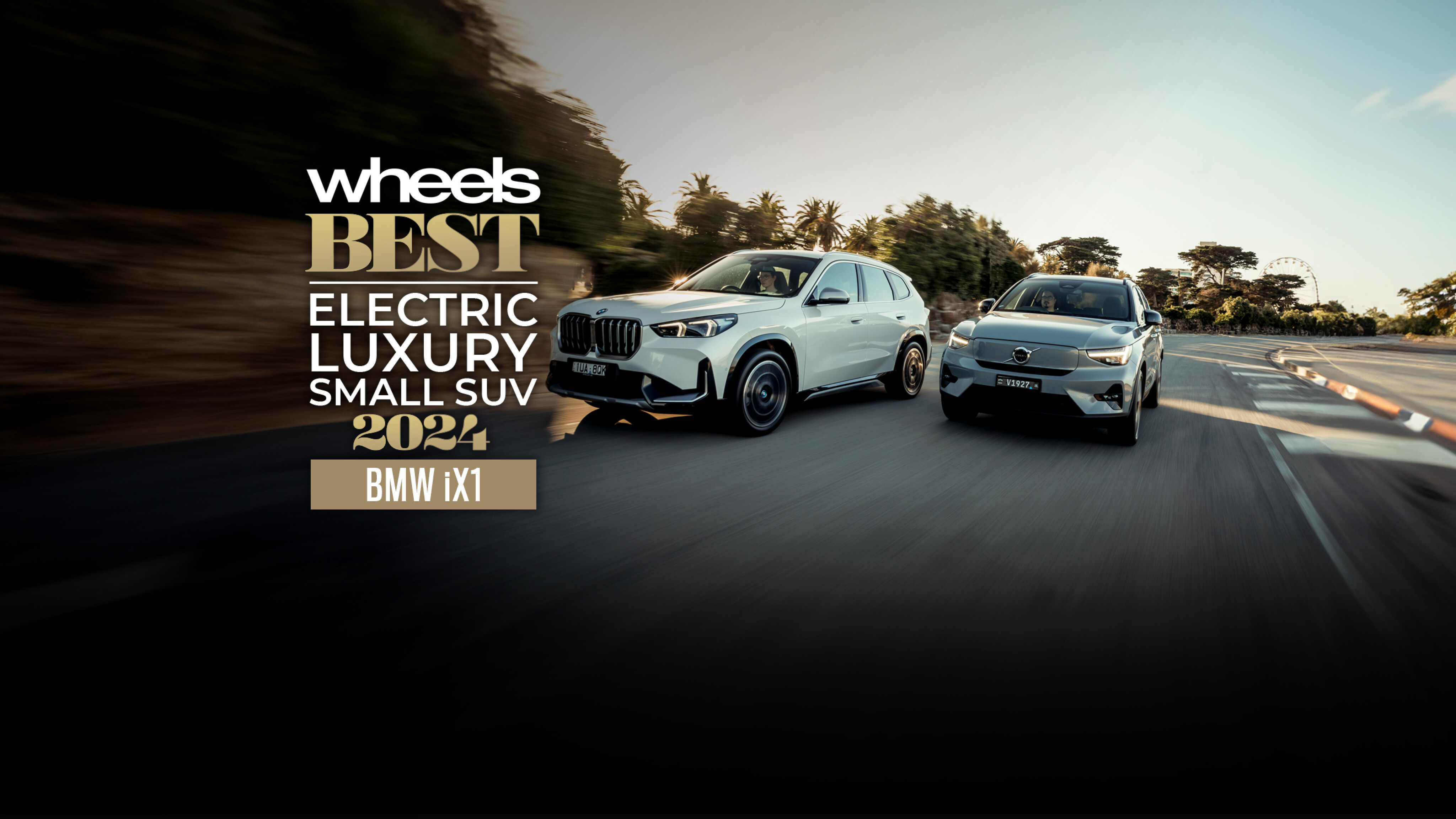
Dedicated EV platforms are becoming widespread, and the best battery-electrics are without doubt those that were built from the ground-up to forgo any form of combustion power.
However, manufacturers are still banking some easy wins by hooking all-electric hardware into legacy (read: internal combustion) platforms, often to good effect. Two examples of that strategy are the cars we have here: BMW’s iX1, and the Volvo XC40 Recharge.
BMW’s iX1 launched in the middle of last year as a companion to the petrol-powered X1, while… wait, isn’t the XC40 Recharge a plug-in hybrid? It used to be – Volvo Australia canned that config back in 2022 and promptly reincarnated it as a pure electric car; hence its fairly unimaginative full name: the Volvo XC40 Recharge Pure Electric.
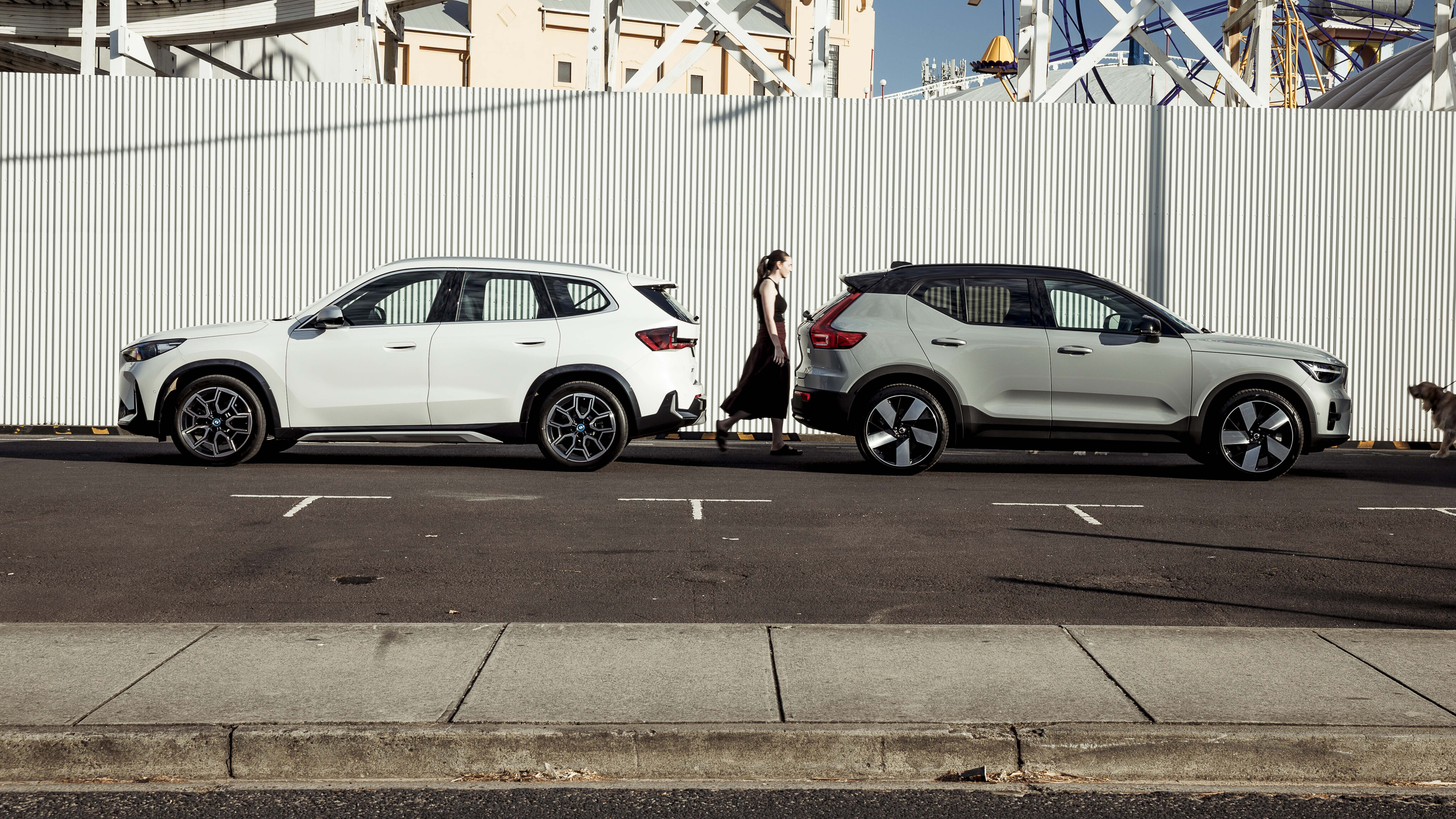
Lexus’s UX300e follows a similar format to the Volvo and Beemer
The XC40 Recharge received an update last year with a battery upgrade to 82kWh for a claimed 500km single-charge range, as well as the addition of a more affordable rear-wheel-drive variant to accompany the existing twin-motor, all-wheel-drive offering.
In the interest of keeping things fair to BMW’s AWD-only iX1 xDrive30, we’ve taken the XC40 Recharge in twin-motor form for this test. Both are priced in the mid-$80K range before on-road costs and options.
What are the alternatives? The Lexus UX300e follows a similar format to the Volvo and Beemer, being an electric variant of a combustion-led model, but despite getting an infotainment and endurance boost last year the FWD-only UX300e is uncompetitive against the Swede and the German in performance, despite costing similar money.
A Mercedes-Benz EQA would have also been a logical inclusion, but with a facelift due to arrive in the next quarter, it made no sense to include a car on the cusp of becoming superseded. Maybe next time.
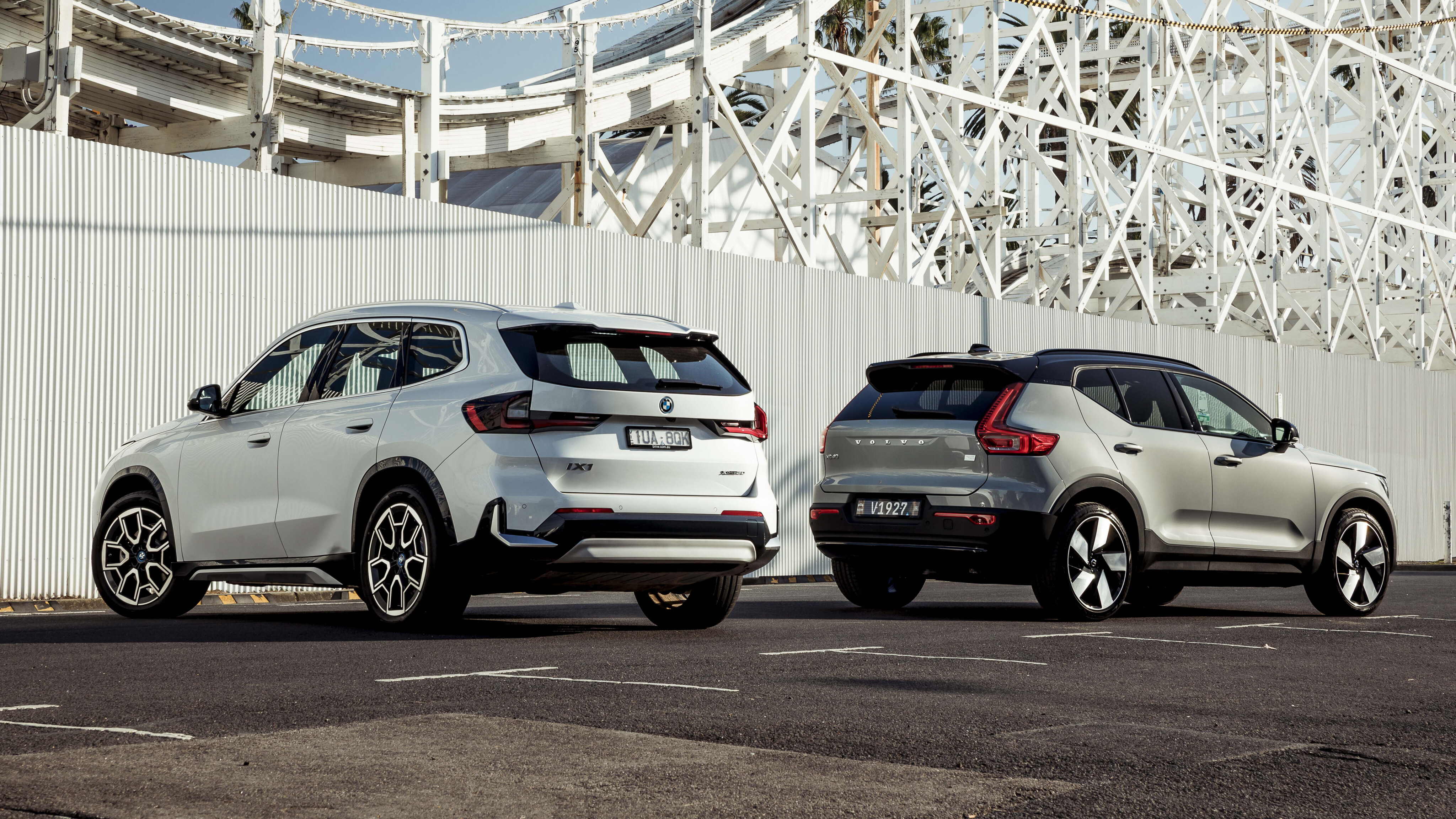
As for the Genesis GV60, the flashy twin to Hyundai’s likeable Ioniq 5, a poor showing in COTY 2023 diminished our desire to put it in the mix – as did its eye-watering six-figure starting price.
But there’s also another reason to home in on just these two. Being built on more ‘traditional’ underpinnings with few external clues to their combustion-free mechanicals, both the XC40 Recharge and iX1 are well-positioned to capture the kind of buyer who’s keen to test the battery-electric waters but doesn’t want to make a big deal about it, because from 20 paces both of them just look like a regular ol’ SUV.
If you’re the kind of person who doesn’t want to invite questions about battery range and carbon emissions from your annoying neighbour, it’s these kinds of EVs that could allow you to fly under the radar. Saving the planet without making a fuss? Here’s what that’s like.

First impressions matter, and the iX1 makes an initial misstep. It might not be obvious from the photos, but its steering column is offset to one side, and thus misaligned with the driver’s spine.
I’d prefer the BMW badge on the horn pad to be staring straight at my sternum, but in the iX1 it gazes in the direction of my right nipple. A trivial concern? I’ll concede that, but I’m resorting to triviality because it’s pretty hard to fault the rest of the iX1’s cabin.
This is remarkably mature for a baby SUV. From the soft leather of the steering wheel rim to the laser-cut aluminium speaker grilles and, of course, the massive 10.25-inch instrument panel and 10.7-inch curved infotainment touchscreen that stretch across two-thirds of the dash, the iX1 xDrive30 feels properly premium.

The centre console is hovering above an open storage shelf that looks perfect for an entire rotisserie chicken.
Power-adjusted front seats with integrated heaters come standard, as do dual-zone climate control, a powered tailgate and a crisp, bright head-up display. But our tester went a step further with its Enhancement Package ($3615) bringing extra frills in the form of a panoramic glass sunroof, Harman Kardon audio and active sports seats with massage function.
Utility and comfort are well served too. The centre console is partially cantilevered out between the front seats, hovering above an open storage shelf that looks perfect for stowing handbags, baguettes, or an entire rotisserie chicken.
Meanwhile, the wireless charging pad props phones vertically against the centre stack, secured by a rollercoaster-style bar in a recess big enough for even the most engorged phablet.
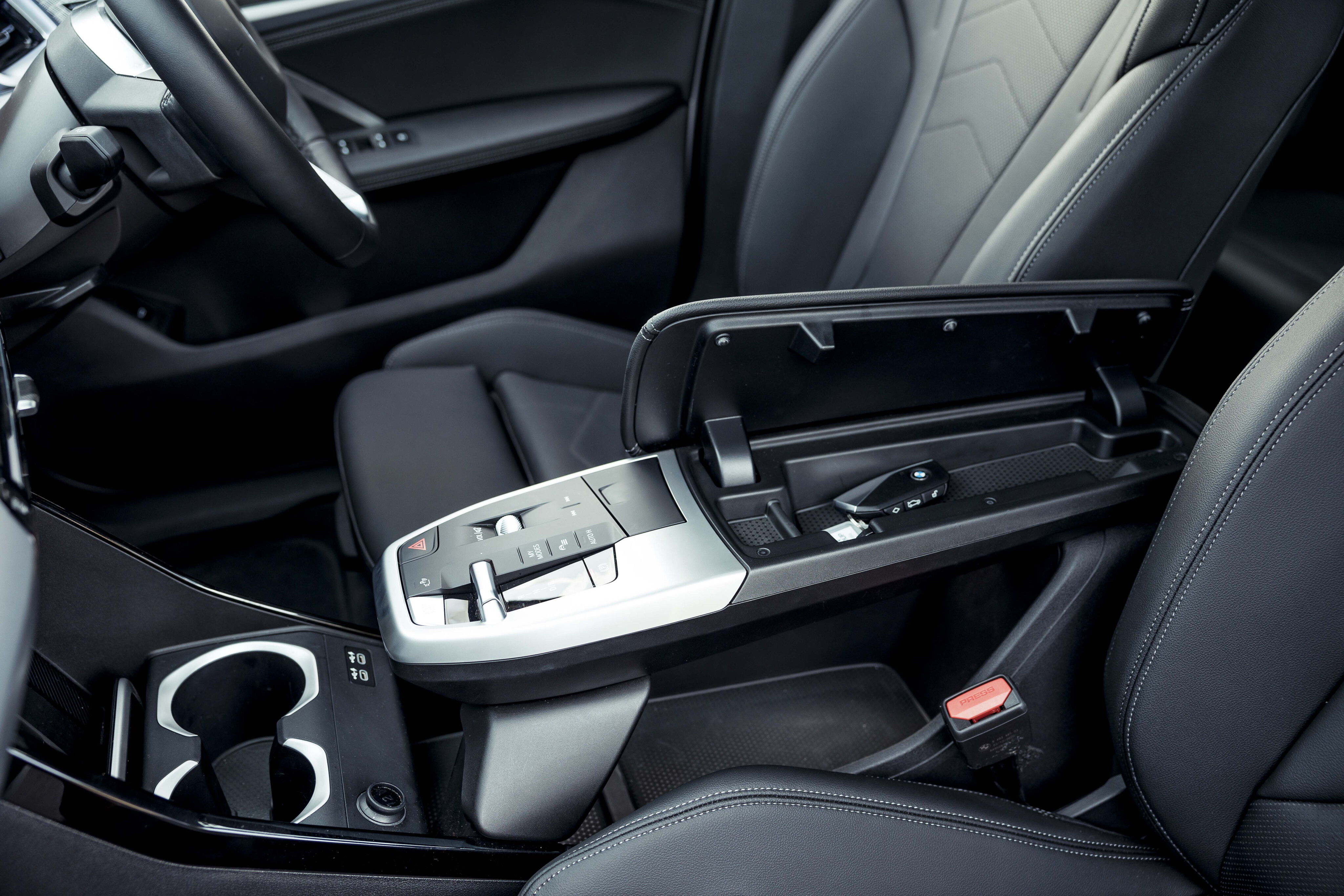
At the back, there’s legroom aplenty courtesy of a flat floor with almost no tunnel intrusion, along with a rear bench providing decent under-thigh support, a fold-down armrest and a reclinable backrest.
It’s worth remembering that the X1 is relatively fresh out of its wrapper – because the XC40 is starting to feel a bit beyond its best-before date these days. Its 9.0-inch infotainment screen looks like a postage stamp next to the X1’s mega-widescreen displays, and the interface can’t match the response speed nor intuitive operation of BMW’s software.
There’s no head-up display either, though the XC40 Recharge’s single specification grade does at least include things that are optional in the BMW, like a panoramic roof, rear seat heaters and Harman/Kardon stereo.

Material quality in the Volvo is good, though, and even the (ultra capacious) door bins are lovingly carpeted with thick fibres.
The Volvo’s ‘Topography’ trim on the dash and doorcards might look like ordinary injection-moulded matte-black plastic in the daytime (and it attracted more than a few comments for appearing cheap), but at night the translucent backlit panels are an innovative way of casting ambient light into the cabin. It’s just a shame you have to wait until the sun goes down to appreciate them.
However, the rear seats lack comfort for adult-sized passengers, with a low H-point and flat squab giving a knees-up posture that takes weight off the thighs and transfers it to the glutes. It’s not helped by the large tunnel and slim gap between the centre seat and the rear of the centre console – making the XC40 more of a four-seater than a true five-seater – while the rear backrest can’t be reclined any further from its rather upright locked position. It’s also dark back there.
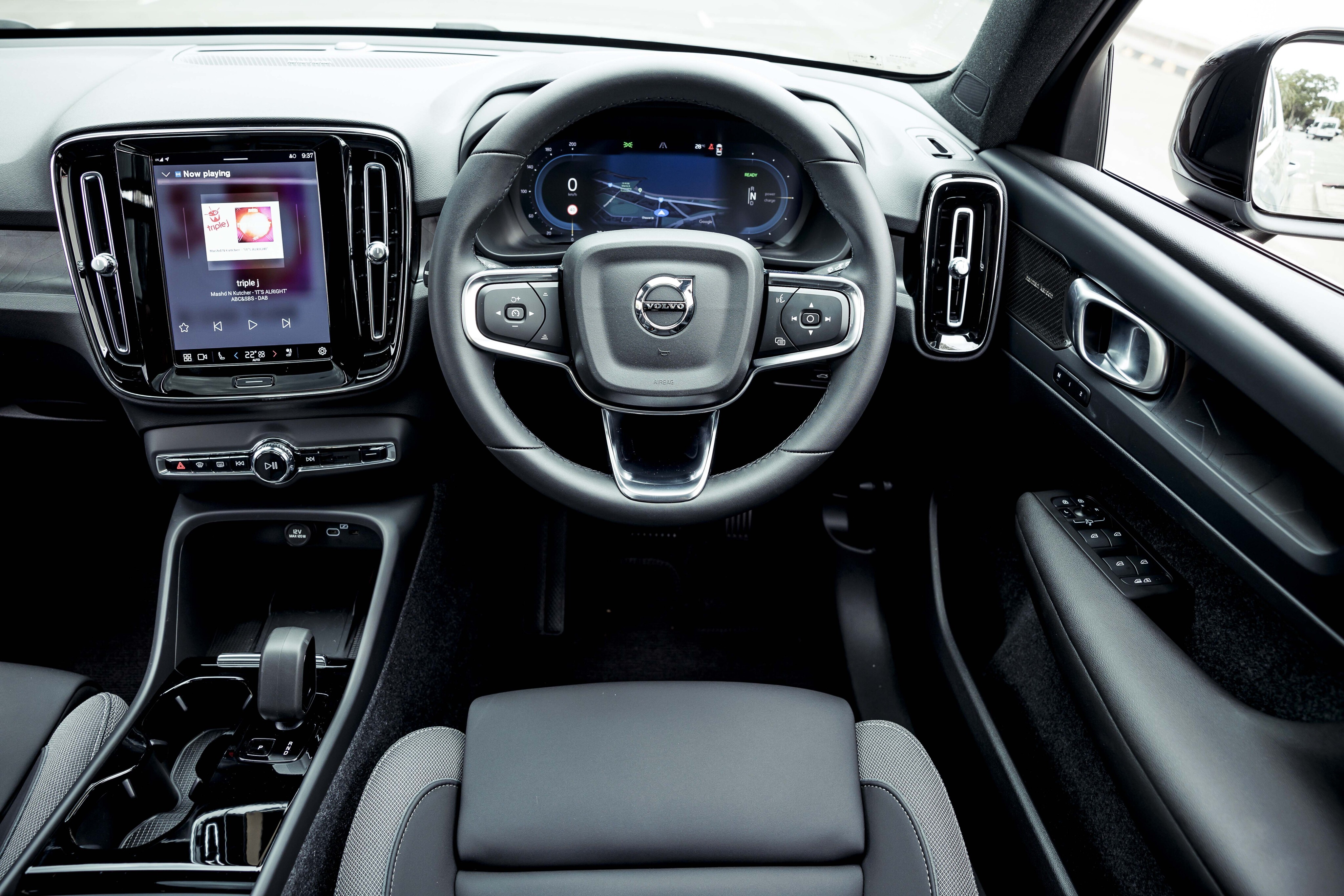
The XC40’s turret is more hatch-like than wagon, with no quarter glass behind the rear doors. That leads to a cave-like ambience in the rear cabin, and a horrendous blind spot.
Volvo wins back some interior points by virtue of its frunk – something the iX1 lacks – as well as its nifty flip-up cargo divider and multitude of shopping bag hooks. Though boot capacity numbers favour the BMW (490L in the iX1 versus 452 litres in the XC40), the Volvo’s boot area feels more versatile and useful.
The XC40 feels like an absolute hotrod out on the streets. Little wonder, what with its twin-motor setup (110kW front, 190kW rear) slamming a combined 300kW and 670Nm to the road via all four wheels.
Equipped with sticky Pirelli P-Zeros in staggered sizing (255s at the back!) on 20-inch alloys, the XC40 Recharge Twin needs that rubber to deliver on its 4.8-second zero-to-hundred claim, which is a remarkable number when you note its 2.2-tonne kerb weight.
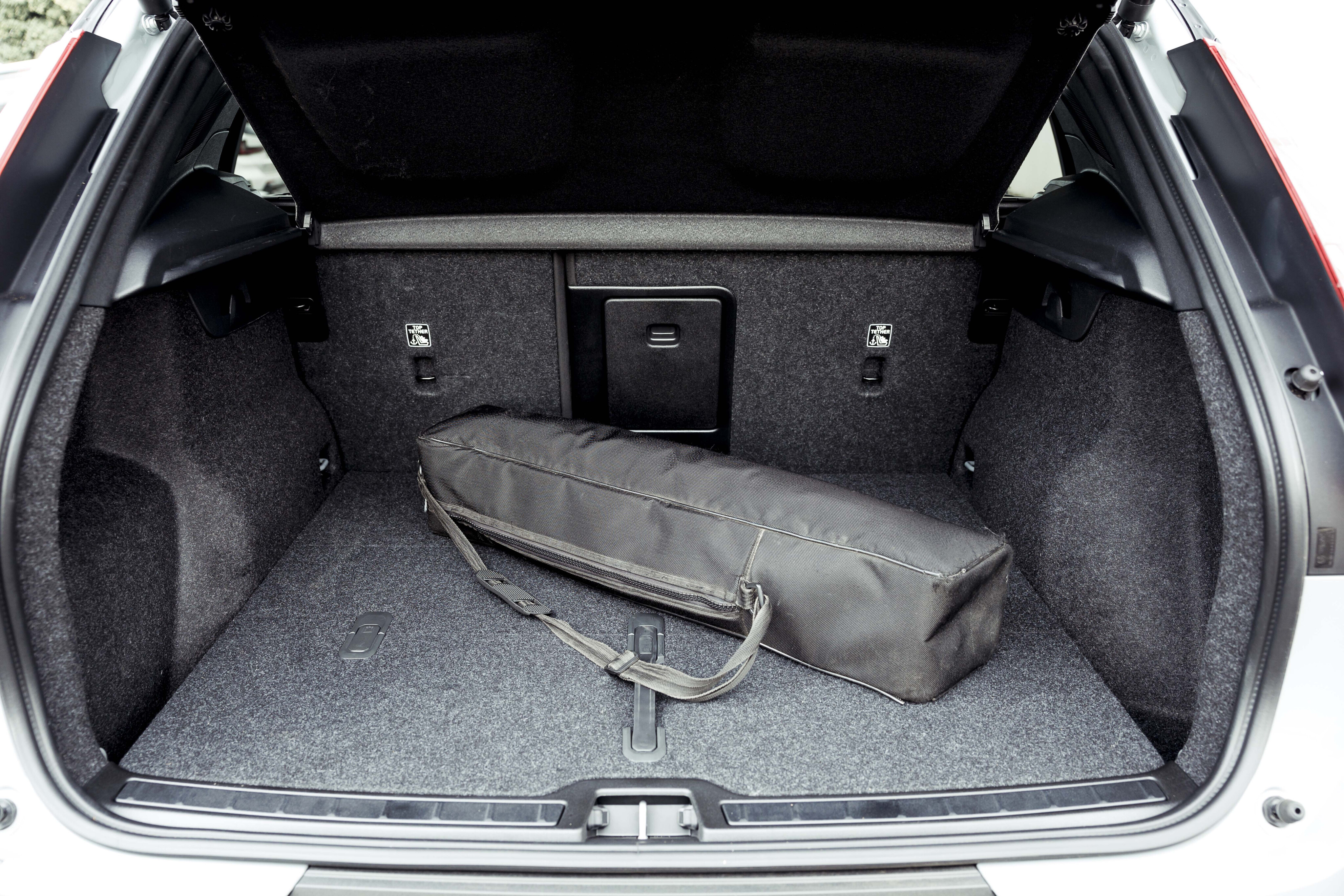
With an 82kWh battery, the Volvo also has a range advantage against the iX1 and its significantly smaller 67kWh lithium-ion pack, with range claims of 485km and 400km respectively. We’ll get to what that means in the real world in just a sec.
The BMW also has a twin-motor configuration, they’re just a little less ‘roided up than what the XC40 is rocking, with combined outputs of 230kW and 494Nm. In a straight-line blat the Bimmer is certainly fast enough, with crisp torque delivery at lower speeds and good traction from its Hankook Ventus S1 Evo3s, but the 5.6-second 0-100km/h run means it’ll never hang with the Volvo in a stoplight drag.
But that shouldn’t matter to would-be buyers, as neither are pitched as performance cars. Range and comfort are going to be the critical on-road criteria, and this is where a convincing winner appears.

On a 100-kilometre loop with a 70:30 split between urban and highway driving, the difference in energy consumption was obvious.
The Volvo consumed an average of 17.7kWh/100km – a 1.3kWh/100km improvement on the factory claim of 19.0kWh/100km – however the BMW trounced it with a 15.5kWh/100km energy burn (2.8kWh/100km less than BMW’s own claim). Dividing its battery capacity by that number returns a theoretical maximum real-world range of 430km, against the XC40’s 460km.
Our on-test distance delta isn’t quite as big as the factory claims make out, and though the Volvo is still the outright range king, the BMW will need to spend less time at a charger in order to travel a given distance.
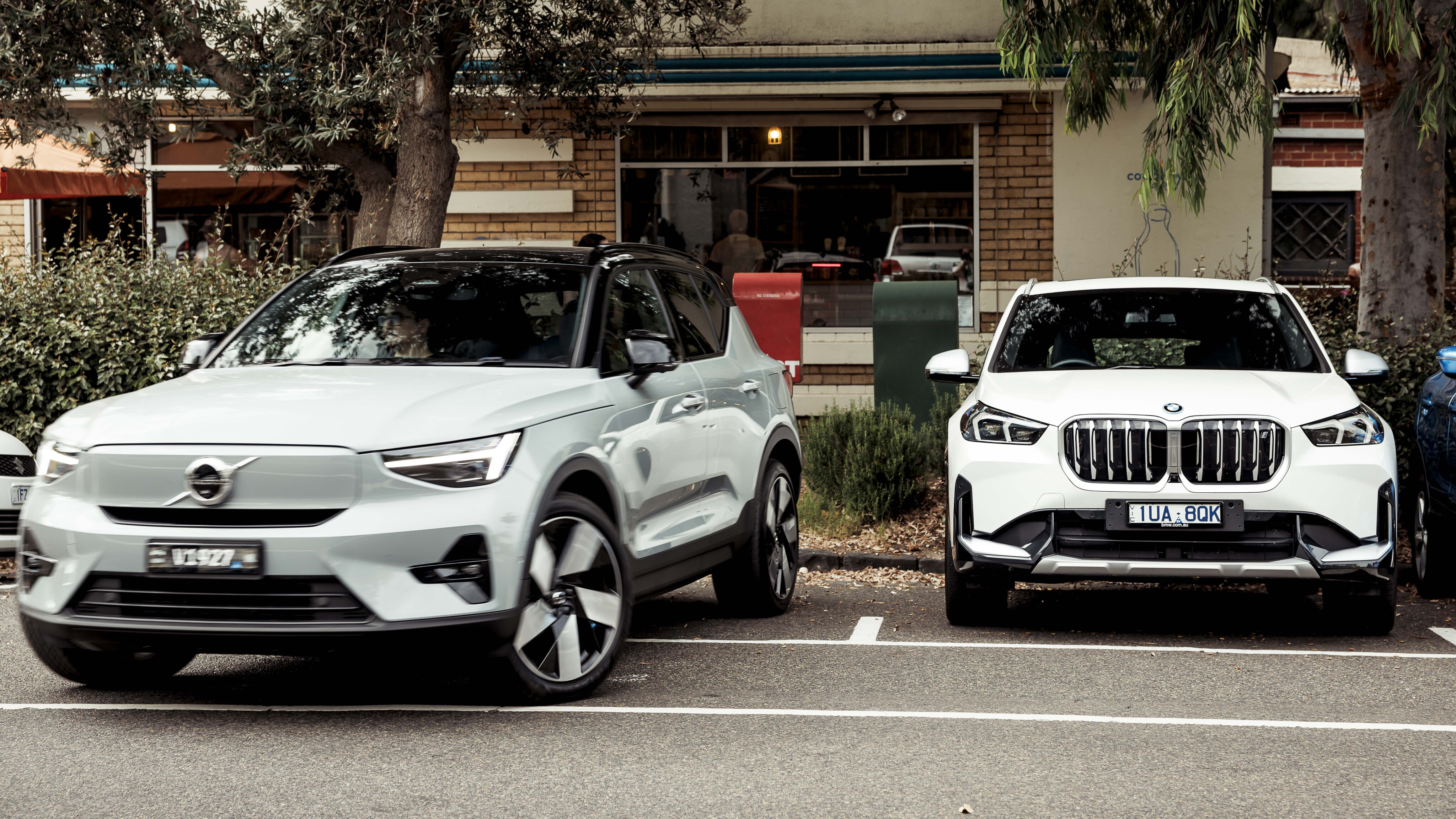
That arguably comes down to weight. The BMW weighs nearly 200kg less than the Volvo, and with less mass to motivate it’s no great surprise it’s the more energy-efficient machine.
A disparity in weight likely also explains the other thing that sets these two cars apart: ride quality. The Volvo feels like it has a tauter, more sensitive suspension, with plenty of head-toss in the pitch axis making it less comfortable on a lumpy road. It corners well with ample grip, but we suspect the average owner would probably appreciate slacker suspension. The BMW, by contrast, is far more composed and natural on its adaptive suspension and 19-inch rims.
Both cars have their merits, and the Volvo XC40 Recharge makes for one heck of a sleeper – smoking V8s and hot hatches is something it’s surprisingly good at. However, for its balance of comfort, technology, performance, efficiency and quality, it’s difficult to ignore the iX1 xDrive30.
Combustion compromise
With floorpans designed to accommodate either a combustion powertrain, a hybrid, or a pure electric one, packaging compromises are inevitable.
For one, the engine compartment usually gets filled up with hardware like the inverter, charger and other control electronics, while pure-EV platforms are typically able to open up that area for luggage.
Volvo does a better job here, providing enough stowage for the car’s emergency charge cable under the bonnet – but the iX1 has no ‘frunk’ to speak of.
SCORING
| Volvo XC40 Recharge Twin Pure Electric | BMW iX1 xDrive30 xLine | |
|---|---|---|
| Safety, value and features | 8 | 8 |
| Comfort and space | 6 | 7.5 |
| Engine and gearbox | 8.5 | 8 |
| Ride and handling | 6.5 | 7.5 |
| Technology | 6.5 | 8.5 |
| Overall | 7.1 | 7.9 |
⚡ 2024 Wheels Best EVs
Looking for an EV in a different size or price category? Visit our full Wheels Best EVs series at the links below.
🔗 Wheels Best EVs
- Best Small Electric Car Under $40K
- Best Small Electric Car $40-50K
- Best Small Electric Car $50-60K
- Best Electric Small SUV
- Best Electric Midsize SUV
- Best Electric Midsize Sedan
🏅 OVERALL WINNER: Best Electric Car Under $80K
PART 2
- Best Electric Large SUV
- Best Electric Small Luxury SUV
- Best Electric Midsize Luxury SUV
- Best Electric Luxury Sedan Under $100K
- Best Electric Luxury Sedan Over $100K
- Best Electric Performance Car
🏅 OVERALL WINNER: Best Electric Car Over $80K
Specifications
| Volvo XC40 Recharge Twin Pure Electric | BMW iX1 xDrive30 xLine | |
|---|---|---|
| Price | $85,990 + on-road costs | $84,900 (as tested $88,515*) + on-road costs |
| DRIVETRAIN | ||
| Engine | Electric | Electric |
| Layout | Dual motor, AWD | Dual motor, AWD |
| Power | 300kW | 230kW |
| Torque | 670Nm | 494Nm |
| Gearbox | Single-speed reduction gear | Single-speed reduction gear |
| 0-100km/h | 4.8s (claimed) | 5.6s (claimed) |
| CHASSIS | ||
| Body | steel, 5 doors, 5 seats | steel, 5 doors, 5 seats |
| L/W/H/W–B | 4440/1938/1651/2702mm | 4500/1845/1642/2692mm |
| Track (F/R) | 1601/1610mm | 1585/1587mm |
| Weight | 2192kg | 2010kg |
| Boot | 452L | 490L |
| Battery | 82kWh lithium-ion | 67kWh lithium-ion |
| Economy | 19kWh/100km (WLTP)17.7kWh/100km (as tested) | 18.3kWh/100km (ADR 81/02 combined cycle)15.5kWh/100km (as tested) |
| Suspension | Front: MacPherson struts, coil springs, anti-roll bar. Rear: multi-link, coil springs, anti-roll bar | Front: struts, coil springs, anti-roll bar. Rear: multi-links, coil springs anti-roll bar |
| Steering | electric rack-and-pinion | electric rack-and-pinion |
| Front brakes | ventilated discs/regenerative | ventilated discs/regenerative |
| Rear brakes | ventilated discs/regenerative | ventilated discs/regenerative |
| Tyres | Pirelli P-Zero Elect | Hankook Ventus S1 Evo3 |
| Tyre size | 235/45R20 front, 255/40R20 rear | 245/45R19 |
| SAFETY | ||
| ANCAP rating | 5 stars (expires DEC 2024) | 5 stars (expires DEC 2028) |
| Warranty | 5ys/unlimited km (vehicle), 8yrs (battery)Service interval: 12 months/15,000km | 5yrs/unlimited km (vehicle), 8yrs/160,000km (battery) |
| Service interval | 12 months/15,000km | Condition-based servicing – no set intervals, no set costs |
| VERDICT | 7.1 /10 | 7.9/10 |
| *Enhancement Package – ($3615) | ||

COMMENTS